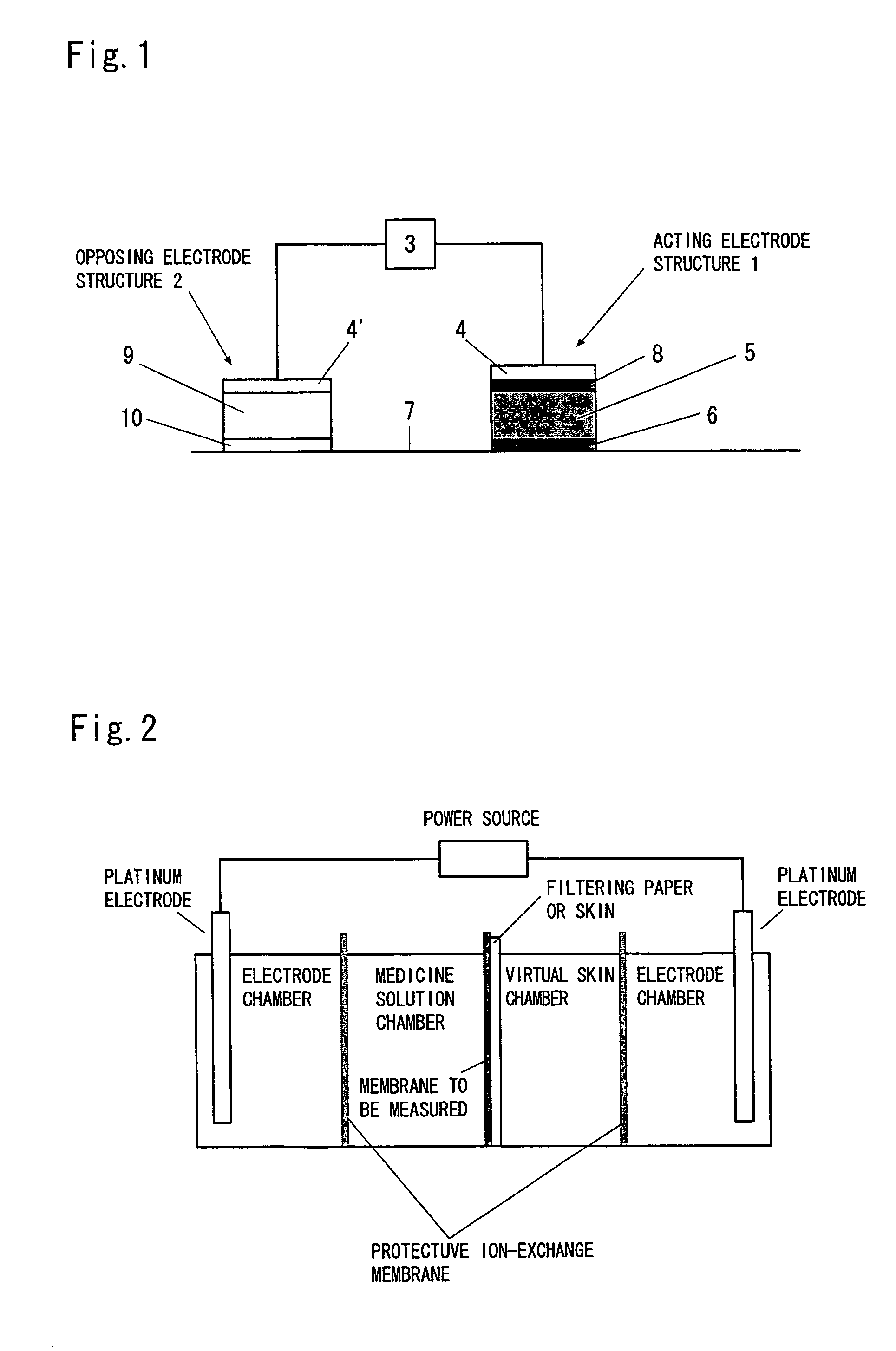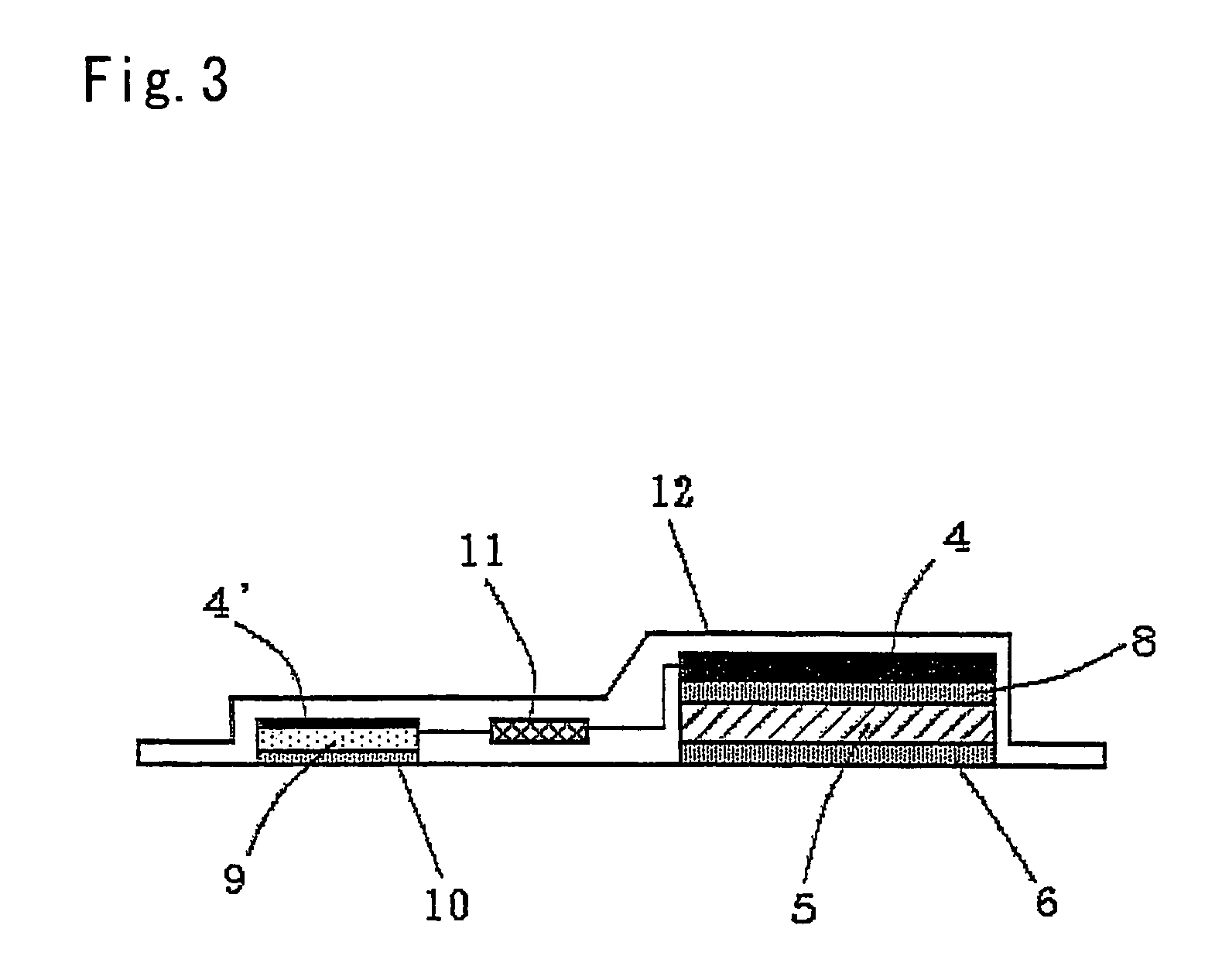Iontophoresis apparatus
a technology of iontophoresis and apparatus, which is applied in the field of iontophoresis devices, can solve the problems of adverse effects on the living body, ineffective administration of desired medicines, and ineffective penetration into the living body
- Summary
- Abstract
- Description
- Claims
- Application Information
AI Technical Summary
Benefits of technology
Problems solved by technology
Method used
Image
Examples
preparation example 1
[0071]There was prepared a monomer composition comprising 380 g of a chloromethylstyrene, 20 g of a divinylbenzene and 20 g of a t-butylperoxyethyl hexanoate. 420 Grams of this monomer composition was introduced into a 500-ml glass container and in which a porous film (made of a polyethylene having a weight average molecular weight of 250,000, a thickness of 25 μm, an average pore size of 0.03 μm, percentage of voids of 37%) measuring 20 cm×20 cm was immersed under the atmospheric pressure at 25° C. for 10 minutes, so that the porous film was impregnated with the monomer composition. Next, the porous film was taken out from the monomer composition, covered on its both sides with polyester films of 100 μm thick, and was heated and polymerized under a nitrogen pressure of 3 kg / cm2 at 80° C. for 5 hours. Thereafter, the obtained membrane was reacted in an aminating bath comprising 10 parts by mass of 30% by weight of a trimethylamine, 5 parts by mass of water and 5 parts by mass of ace...
preparation examples 2 to 5
[0073]Anion-exchange membranes were prepared in the same manner as in Preparation Example 1 but changing the monomer composition and the porous film into those of compositions shown in Table 1. Properties of the obtained membranes were as shown in Table 1.
preparation example 6
[0074]There was used a monomer composition shown in Table 1 and with which a porous film was impregnated in the same manner as in Preparation Example 1. The porous film was taken out from the monomer composition, covered on its both sides with polyester films of 100 μm thick, and was heated and polymerized under a nitrogen pressure of 3 kg / cm2 at 45° C. for 3 hours and at 75° C. for 5 hours. Thereafter, the obtained membrane was immersed in a mixture of methyl iodide and n-hexane at a ratio of 1:3 (weight ratio) at 30° C. for 24 hours to obtain a quaternary pyridinium type anion-exchange membrane.
[0075]The obtained anion-exchange membrane was measured for its ion-exchange capacity, water content, fixed ion concentration, membrane resistance, membrane thickness, surface roughness, and flexibility. The results were as shown in Table 1.
PUM
 Login to View More
Login to View More Abstract
Description
Claims
Application Information
 Login to View More
Login to View More - R&D
- Intellectual Property
- Life Sciences
- Materials
- Tech Scout
- Unparalleled Data Quality
- Higher Quality Content
- 60% Fewer Hallucinations
Browse by: Latest US Patents, China's latest patents, Technical Efficacy Thesaurus, Application Domain, Technology Topic, Popular Technical Reports.
© 2025 PatSnap. All rights reserved.Legal|Privacy policy|Modern Slavery Act Transparency Statement|Sitemap|About US| Contact US: help@patsnap.com



